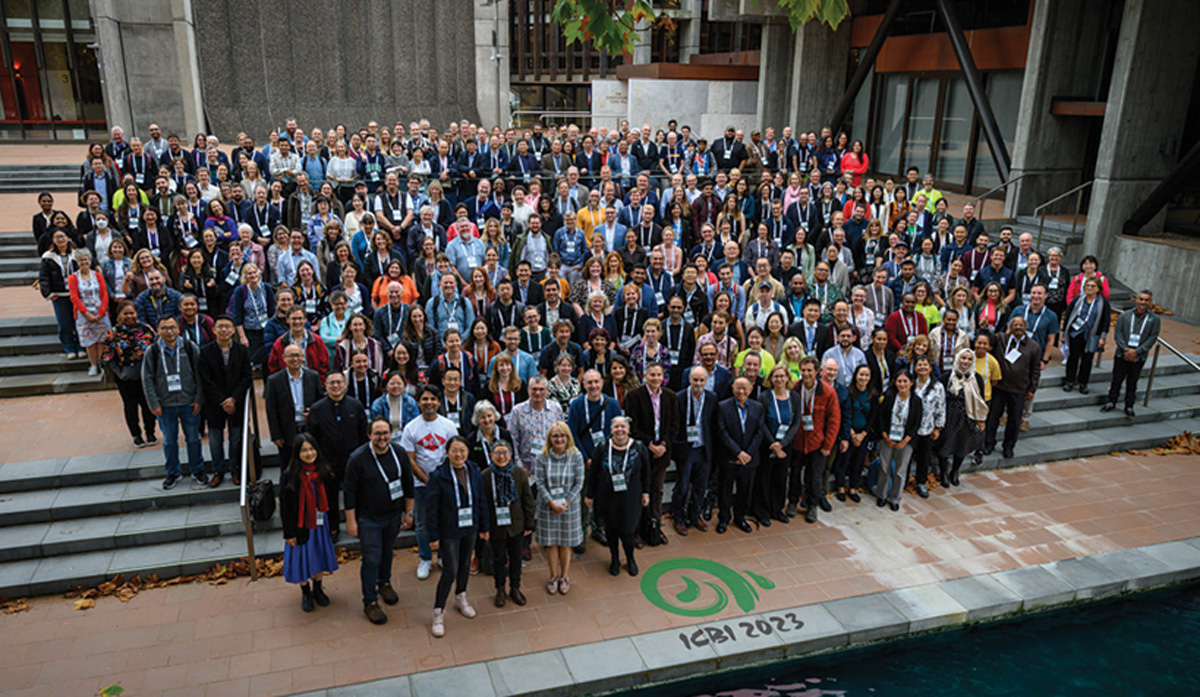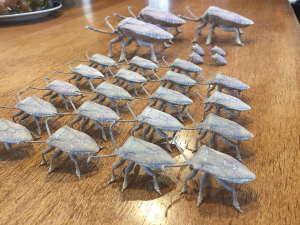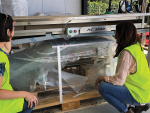I was fortunate to be involved in the International Congress of Biological Invasions 2023, held in Christchurch in early May.
The congress brings together more than 400 researchers from throughout the world, and this was the first time it had been held outside of China.
Invasive alien species (IAS) are animals and plants introduced accidentally or deliberately into a natural environment where they are not normally found, with serious negative consequences for their new environment. No country is immune from IAS or their impacts economically, environmentally, and socially. New Zealand is vulnerable to IAS as our economy relies on primary production and our geographic isolation gives rise to unique flora and fauna. Defending our country from IAS must be a priority, and New Zealand is seen as a world leader in research programmes, integrated pest management, and offshore and onshore island predator eradication.
The three-day event was held at the Christchurch Town Hall, with keynote speakers leading the day. The programme was intense; with 76 sessions each day, the difficulty was selecting which to attend.
I attended a session facilitated by Dr Tracy C. Leskey, Appalachian Fruit Research Station Director/Research Leader and Research Entomologist. Tracy’s session focused on brown marmorated stink bug (BMSB) surveillance, management, and biological control, and discussed progress made in managing this invasive pest and continued knowledge gaps.
In 2010, the mid-Atlantic in the United States had a devastating outbreak of BMSB, which led to catastrophic crop damage and threatened the livelihoods of impacted growers in the region. Tracy and her team have made continuous progress understanding the basic biology, ecology, and behaviour of this pest since the outbreak. BMSB has been found in 47 states (and four Canadian provinces) and poses a severe agricultural problem in 10 states and nuisance problems in 21 others.
Since the devastating outbreak of BMSB, scientists have learned that many native enemies of other stink bugs in the US will also attack BMSB. Unfortunately, those native enemies were not well adapted to BMSB and did not stop it from damaging crops. Scientists in Newark, Delaware, began a worldwide search for a solution. The search discovered a key natural BMSB enemy, the egg parasitoid Trissolcus japonicus, known as the samurai wasp. The stingless wasp destroys 60-90% of BMSB eggs in Asia; it is an endoparisitoid of the stink bug, meaning it lays an egg within a BMSB egg, killing it in the process.
Research is underway at quarantine laboratories in the US to determine the suitability of the samurai wasp for mass release into the there. During 2014 and 2015, surveys detected the wasp in several locations, having arrived in the country naturally, and by 2017 it was found in 10 states and Washington DC. To protect US agricultural crops from the BMSB, planning is underway to raise large numbers of the wasp in laboratories for release in areas with large BMSB populations.
Another session was conducted by University of Canterbury student Joel Tregurtha, who is completing a Bachelor of Science, majoring in biological sciences. Joel presented the work he and a fellow student completed during summer, developing and 3D printing a model BMSB. As Joel indicated in his session, “effective biosecurity relies on an informed and engaged public.” The aim of their work is to use the models for educational, public awareness programmes, community events, and at field days.
 |
|---|
|
International Congress of Biological Invasions.
|
While not yet found in New Zealand, BMSB is often intercepted at the border. New Zealand has strict border and post-border controls in place to detect the presence of BMSB. The New Zealand Winegrowers (NZW) Most Unwanted poster indicates that BMSB is one of the biggest exotic threats to our wine industry, with potential for significant economic consequences if it were to establish in New Zealand.
Ursula Torres, Biosecurity Intelligence Analyst at the Ministry for Primary Industries presented on New Zealand’s biosecurity for the future. I had attended the first in a series of six online workshops on New Zealand’s biosecurity system strategy development, so I was keen to learn more about this. This strategy is being developed through engagement with stakeholders and review of key strategic documents. The workshops focus on the draft strategic priorities (pou), and the first workshop focused on Ko Tātou; This Is Us – the foundation of awareness and shared responsibility in protecting New Zealand. The six strategic pou, identified for the system to operate more effectively, are: capability and capacity; strong Tiriti partnerships; sustainable investment; system integration and co-ordination; and future focused innovation. A strengthened, more strategic, and strongly led biosecurity system should be better at coping with emerging threats. The threats we face are growing in scale and complexity, with climate change, changing risk pathways, and pressure from established pests. A thriving, well-functioning biosecurity system will provide direct outcomes such as improved protection of our indigenous and valued introduced species, biodiversity, ecosystems, and landscapes. It will enable safe travel, trade, and food supplies, and protect our cultural, social, and economic wellbeing.
Follow progress on the strategy at: mpi.govt.nz/biosecuritystrategy















